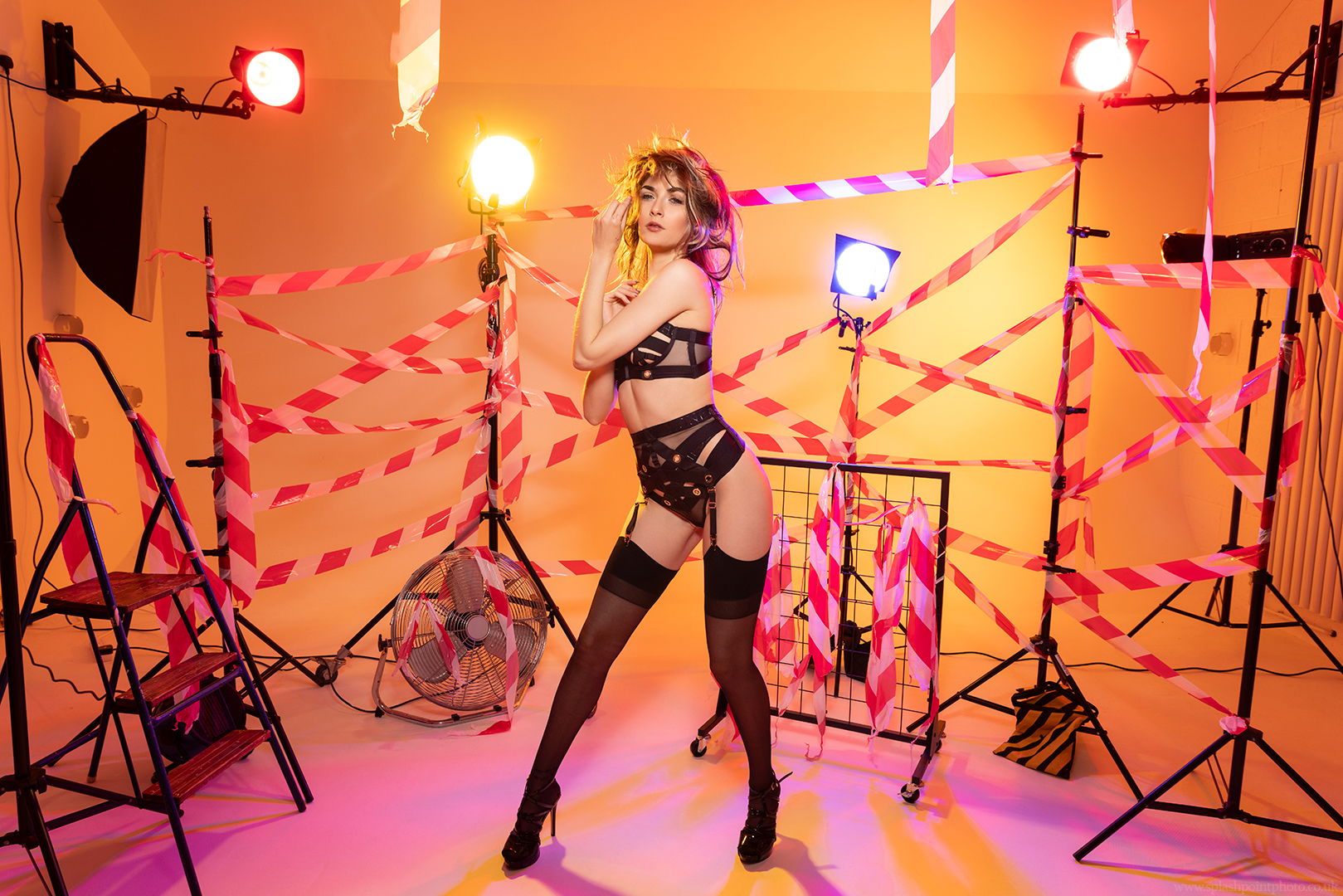Firing multiple strobe lights the easy way.
How to Fire Multiple Studio Lights Using Optical Slaves
Picture this: you’ve misplaced your trigger, and the sync cable's nowhere to be found, or the trigger’s battery is dead - and of course, you don’t have a spare 12v or the tiny screwdriver needed to change it. It happens. Small bits of gear like triggers or cables are easy to misplace or forget. But don’t panic, because you did remember your trusty Speedlite! It's also worth mentioning that triggers and receivers come in all shapes and sizes, and it's only the small ones that typically need unscrewing and that take the unusual sizes 12vs.
Anyway, that small flashgun that you throw on top of your camera. That is also called a speedlite, and it has just saved the day. Whether you packed it as a backup, or it’s just a permanent fixture in your gig bag, you can now use it to fire many studio strobes using their built-in optical receivers. I’ve used this trick myself plenty of times, and I’ve seen others do the same. It can also be useful when the key light is so tightly focused and controlled that its pulse of light doesn’t trigger the other lights optically. It’s not the perfect solution, and you could move your receiver around on to a boarder light source in the set-up which isn't the key, but what if all the lights are as tightly controlled? Well, when you’re short of a trigger/receiver, or missing a sync cable, then this quick hack can keep the shoot going!
Some cameras on the budget end also have built in flash, and the best way to do this is to power your on-camera-flash right down, and/or twist the speedlite to face a ceiling or wall so it's barely an influence on your subject. Not all speedlites can twist and tilt, but most in this day an age will, unless they're trying to recapture that retro vibe. I do have a particularly funky Godox one that doesn't. Anyways, now you can use your not forgotten flashgun's tiny (powered down and in comparison to a studio strobe) pulse of light to fire all the studio lights without the use of any trigger or a sync cable. Perfect.. kinda.
As mentioned in the previous blog, it's sometimes a lifesaver, and I've seen it done plenty of times when shit hits the fan. A little bit of ingenuity can go a long way, because with experience and knowledge, you probably don't need telling this, but for those new to all things strobes, hopefully this blog finds you well, and now you're even better prepared without the panic. Thinking your way out of a crisis is lovely like, but knowing beforehand, well you've just saved yourself a bunch of stress. I repeat, though, it's not ideal. It's not a 'use it in every shoot' life hack because you're feeling lazy or aren't experienced with triggers so they're intimating; it's a get out of jail free card. You still want to avoid any extra light that is probably influencing your subject in some way beyond your control, and your speedlite might be! It might be a slightly different white balance. The colour of the wall or ceiling you bounce it off might not be a neutral colour, and therefore it is colour casting your image with an unusual white balance.. it's an 'unless you have no other choice' choice.

Just about every set-up I use, I trigger optically. The above image of Ell is a 7 light set up and uses a couple of the Godox DE300's too - if you've read or seen the previous 101s, you will understand the reference :)
So before I rambled about this (not so imaginary) scenario, what are optical slaves?
As per the video, and I hope you watched it, it's that little red translucent cover somewhere on your strobe. It's sole purpose is, as the above suggests, to react when it sees a pulse of light. It houses a light sensitive receptor, but it's no more intelligent than that. It can be fooled if it's near a particularly bright light too, so then any pulse of light in the room that doesn't over power that bright light shining on it, will make said pulse less obvious to it and possibly render it ineffective. That's another scenario is which it may not fire. It isn't reactive to constant light, however, so pointing a steady continuous light at it will not be an issue otherwise, but your lights may fire by simply turning any kinda of lighting on nearby that wasn't on before. Quite often, if you're shooting with no other ambient lights on in the room and then turn on the ceiling lights, they'll set your strobes off too, but just the once, as when the lights are on it'll have adjusted to the constant.
As mentioned in the video, it could simply be that it's turned off too, as you can usually switch them on and off via a button somewhere. I don't think I've ever personally known a studio strobe where this isn't an option, and I do often get called in to the studio to solve lights not firing when someone previous may have turned the optical slave off via either experience, or people hoping to find a modelling bulb switch somewhere, and jabbing at it. I've also forgotten to turn them off in creative set-ups where that would have been useful instead of flagging, and as recently as the back end of last year, but that's another story for another day, and I won't confuse you with the logistics of that right now. It's easily done if you're not aware, are focused on something else, or are just having a brain fart moment. It's always cool to ask and learn, so don't let such shit get on top of you if you later realise!
